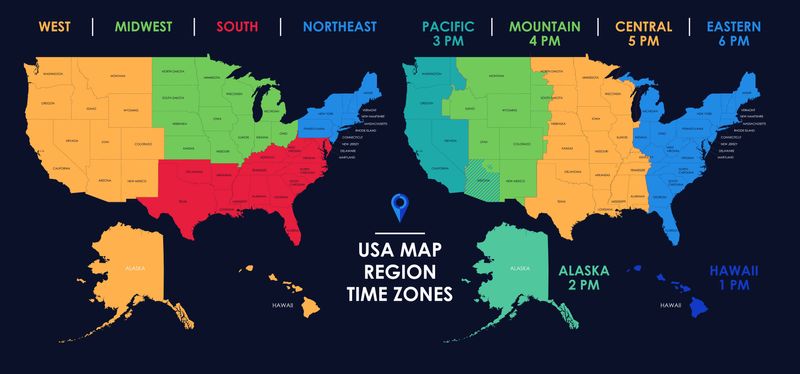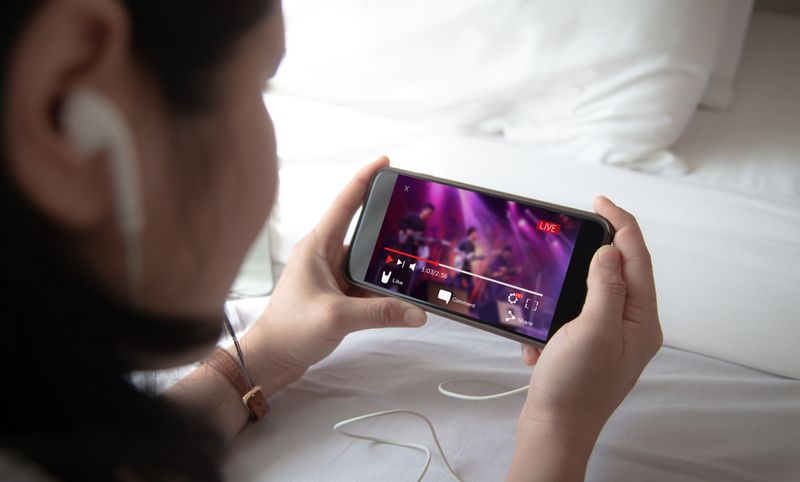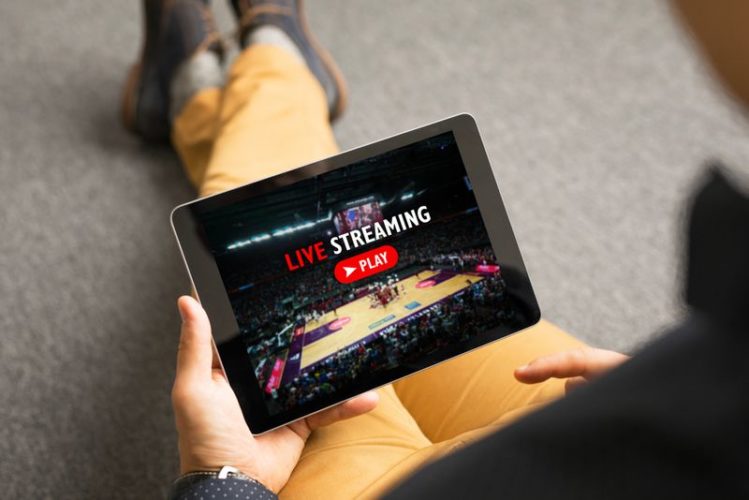How Delayed Is Live TV? Unpacking the Delay Between Real-Time and Broadcast

What To Know
- Live TV typically includes a delay of 5-10 seconds, which is both technical and intentional, allowing for censorship and adjustment of content.
- The concept of delaying live broadcasts originated with radio and has evolved with technology, still requiring manual oversight to remove inappropriate content.
- Live streaming, although similar to live TV, can have varying delays due to internet latency and prioritization of video quality over transmission speed.
In this article, we will learn how delayed live TV is, exploring the reasons behind the gap between real-time events and your screen.
Let’s dive in!
Quick Navigation
Is There a Delay with Live TV?
Yes, there is a delay with live TV. And that’s part technical and part intentional.

Such intentional delays thrived pre-2010s. People weren’t aware of the same much back then.
But, during the late 2010s, when social media started to grow beyond being just a means to get in touch with friends and family, coupled with the emergence of live internet TV, the delays became much more talked about in public circles.
Many high-profile entertainment shows with massive live worldwide audiences started to stream their programs live on the internet, and the discrepancy was pretty easy to decipher.
Why Does Live TV Have a Delay?
Live TV is delayed due to the latency between when and what the camera records and the point at which the viewers get to see the captured visuals and hear the audio on their TVs.
As stated earlier, the delay is also intended to allow broadcasters to prevent technical errors or objectionable content (profanity, nudity, bloopers, etc.) from showing on TV.
But despite the conscious effort to filter out content unsuitable for the general audience, objectionable clips, such as wardrobe malfunctions and on-air killings and suicides, can sneak through.
Remember the Janet Jackson and Timberlake gaffe at the 2004 Superbowl? Because live TV is not “live” in the truest sense of the word, the broadcaster could have edited out the embarrassment.
And because CBS failed to do that, the FCC later fined the broadcasting network $550,000 for airing the incident.
Live TV Delay Has Roots in Radio
Radio stations were the first to implement such broadcast delays, and the practice is still in place.

The delay is because the radio stations’ signals must travel via a phone cable to their receiver in another city several hundred miles away. The receiver would then send the signal back, causing a millisecond delay.
Due to the minimal delay time, radio stations couldn’t use it much to control or censor the broadcasted content. The breathing period was instead used to boost sound depth and clarity.
The modern-day live delay came into being when magnetic tape graced the scene. Even though the magnetic tape is not as standard as earlier, the method to create live TV delay is still the same.
Dump Boxes Made Effecting the Delay Easier
Introduced during the 1970s, dump boxes are custom-made hard drives that receive live recordings and keep them in memory briefly before outputting them for broadcast.
It achieves the same purpose as magnetic tapes but does it way more efficiently and with minimal resources.
The boxes can instantaneously cut out objectionable content and seamlessly splice the footage by merging instances of silence between audios.
Things have gotten a lot more advanced over the years. However, the need for someone to be at the top of things and manually detect ethically or otherwise wrong moments remains.
Live TV delay is, therefore, still a thing.
How Much is Live TV Delayed?
Live TV usually has a delay of five to 10 seconds. Although the intentional delay is called a “seven-second delay,” the actual delay time can vary and is entirely at the discretion of the people holding the reins.
The time of delay could be more if a country (such as the U.S., Australia, Canada, etc.) has multiple time zones so that the whole nation can watch a nationally broadcast program simultaneously.

The Multiple Time Zone Conundrum
If the live broadcast targets a particular time zone, the regions falling in different time zones receive the recorded or taped version, but it’s still aired as a live broadcast.
In some countries with more than a single time zone, live TV scheduling is enabled nationwide simultaneously, meaning the program timings for various regions could be different.
If the live telecast goes at 08:30 am in the east part of the country, the west will receive it at 08:15 am or even earlier based on the time zone difference.
Live Streaming: How is It Different from Live TV? And Does It Have Delay?
Live streaming is an online data transmission technique that lets viewers watch videos live online. The streaming video is not recorded content but sent in real time over the internet.
The video files are delivered in a staggered manner, with small chunks of the original file sent from a remote storage place. The bit-by-bit file transmission lets the viewer watch the content on their device without downloading the whole video.
To learn more about how live streaming works and its technicalities, watch this video:
How is Live Streaming Different from Live TV?
There’s not a lot of difference between live streaming and live TV. The basic premise is the same.
The primary disparity lies in the fact that live streaming is internet-enabled. On the other hand, radio signals or satellites underpin live television.
Because the internet powers live streaming, people can watch live streams on their phones, laptops, and smart TVs. To watch a live TV broadcast, you need a television.

Also, live streams offer a superior viewing experience than cable or antenna. But that mainly depends on how fast and reliable the internet is.
The better overall quality could also be due to the devices. Watching content up close on a 1080p smartphone screen is much more immersive and personal than watching it on a 4K TV.
Does Live Stream Have Delay?
Yes, there’s a time gap between the point the recording is transmitted live and the moment you watch it on TV.
And if it’s a live presentation of a game already running live on TV or the live streaming feeds off the TV broadcast, expect a further delay.
If two different broadcasting firms handle the TV and online broadcast separately, the delay periods between your TV and internet streaming should be the same.
Why Does Live Stream Have Delay?

Like with broadcast television, the delay is due to latency, and it is also intentional. One also must consider the various possibilities of stoppages between the viewer’s device and the network.
Additional latency is thrown in so the playback can continue while the data stream loads up to ensure no pausing or buffering.
Streaming services can bring down the extra latency but can do that only at the cost of reduced video quality. Current technology makes it hard to achieve both.
Streaming companies, as a result, are left to prioritize between image quality and latency. They choose the former, and rightly so, as viewers won’t mind the delay in transmission but will not accept any semblance of buffering. Any interruptions can be pretty frustrating, to say the least.
But for those who watch live shows or sports events on the internet while checking their social media feeds simultaneously, the live streaming delay could be a spoiler and suck out all the fun.
The Delay Varies with the Streaming Network
Kindly note that the amount of delay could vary across streaming services as different services deliver video slightly differently. The app’s custom player, the number of servers it uses, and the various locations those servers are in determine the level of delay.
Streaming companies function on different CDNs (content delivery networks), which means latency could differ between Netflix and YouTube, for example.
Watch this video to learn about CDNs, what they accomplish, and how:
Conclusion
To reiterate, watching a game or a concert live at the venue is a different experience than watching the recorded bits on TV.
However, not everybody can be at the event location, and live television tries to bridge that gap by transporting those visuals as they happen. There’s that time delay, but the viewer won’t know, or the slightly late transmission won’t hamper the experience.
Is there any hope of there being no delay with live TV? There is, but it’s still a pie-in-the-sky notion, considering the physics and logistics of broadcasting live content to various parts of the world and when it happens.
Even if there were no latency concerns, companies would still prefer to keep the delay intact as there’s always the risk of something objectionable or profane getting by with zero-delay broadcasting.
When something unsuitable for TV viewing shows up on your television screen, it could offend, mislead, or be outright inappropriate for a broad range of viewers.
Also, there would be repercussions for several other stakeholders—including the artists, program producers, the broadcasting company, and even the state.
Catherine Tramell has been covering technology as a freelance writer for over a decade. She has been writing for Pointer Clicker for over a year, further expanding her expertise as a tech columnist. Catherine likes spending time with her family and friends and her pastimes are reading books and news articles.

